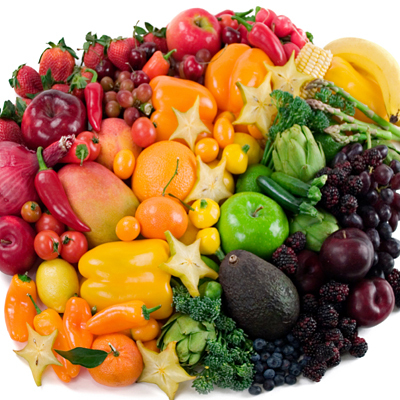Superfoods

Superfoods
While detoxing and searching for solutions for my health, I found this book – SuperFoods RX by Steven Pratt & Kathy Matthews. I used it as a guide for my quest for finding what works for my body. This is a list of Pratt & Matthews’ superfoods: Beans • Blueberries • Broccoli • Oats • Oranges • Pumpkin • Salmon • Soy • Spinach • Tea — green or black • Tomatoes • Turkey • Walnuts • Yogurt.
This is MY list of superfoods in no particular order.
Apples
As the saying goes, an apple a day keeps the doctor away. The apple is a powerful source of antioxidant and has a high fiber content. It also has the richest source of Pectin and Quercetin.
Banana
Banana has high potassium and fiber content. There are too many health benefits of a banana – bananasweb.com has a slew of them. One of the well-known advantages of banana is that helps constipation and diarrhea. Banana is also the only known fruit to eliminate bacteria in the stomach that causes stomach ulcers.
No need for chemically created drug REQUIP to treat your RLS (restless leg syndrome). A healthy dose of a banana will do the trick.
Broccoli
Broccoli is one of the most nutrient-dense foods known to man. It contains a naturally occurring compound called sulforaphane. Sulforaphane is an antioxidant and a cancer-fighting compound found in cruciferous vegetables, ie. broccoli, cauliflower, cabbage and kale. The richest source of sulforaphane is found in broccoli sprouts.
Blueberries
Blueberries has incredibly high levels of antioxidant and phytonutrients that are thought to protect the body against free radicals. The fruit is said to reduce the risk of inflammation, heart disease and cancer.
Walnuts
Like blueberries, walnuts contain polyphenols. Polyphenols, found in plants, are important because they are anti-inflammatory, antioxidants and anti-bacterial. Walnuts is also rich in omega-3 fatty acids (called alpha linolenic acid, or ALA)
Other nuts that are healthy for you? Almonds and pistachios. Get the unsalted baked ones.
Honey
Is one of the oldest medicines known to man. As a topical antiseptic, it inhibits the growth of bacteria, yeast, fungi, and viruses. Honey contains at least 181 known substances, best known of which is its antioxidant abilities.
Salmon
Salmon is the richest, most readily available sources of marine-derived omega-3 fatty acids. Because our bodies cannot manufacture polyunsaturated fats (omega-3 and omega-6), we have to rely on dietary intake to avoid a deficiency in these essential fats. Omega-3 fatty acid prevents cancer and macular-degeneration, mitigates autoimmune diseases (lupus, rheumatoid arthritis, and Raynaud’s disease) and relieves depression and other mental health ailments.
Garlic
Throughout history, garlic is prized for its medicinal properties. It is an antioxidant and anti-inflammatory agent. Of the nearly 100 nutrients in garlic, the most important seems to be an amino acid called sulfur compound allicin.
An old “wives” remedy from my father, if you get cold sores on the mouth, slice off the top of a garlic and rub it to the affected area. It may burn like hell but it will be healed soon enough.
Yogurt
Yogurt and its cultures is said to fortify the immune system, reduce cholesterol levels, prevent certain diseases, protect and act as an anti-infection agent to the intestinal tract. Yogurt that contains live bacterial cultures may help you live longer. Research studies have shown that increased yogurt consumption, particularly in immuno-compromised populations such as the elderly, may enhance the immune response, which would in turn increase resistance to immune-related diseases.
Eating yogurt may help prevent vaginal yeast infections.
Lactobacillus, a probiotic (friendly) bacteria found in yogurt offers “remarkable preventive and curative” effects on arthritis according to a study published in the Journal of Nutrition. Because lactobacillus has already demonstrated beneficial effects in other inflammatory diseases such as inflammatory bowel disorders, researchers thought it might also lessen the inflammation of arthritis.
Soy
There are two arguments for the tiny bean. On the positive side, soybeans have a high content of phytochemicals, one of which is a compound called isoflavones. Isoflavones is believed to prevent cancer, slow down or reverse osteoporosis and reduce the risk of heart disease.
However, soybeans also contain a high level of phytic acid which acts as an antioxidant and a chelating agent. This blocks the body’s intake of essential minerals like magnesium and calcium. Most importantly, soybeans today are largely a “biotech food” crop that is genetically modified and has the highest rate of pesticides contamination of the foods we eat.
Moderation is always a key to everything. It’s a mixture of foods that keeps us healthy.
